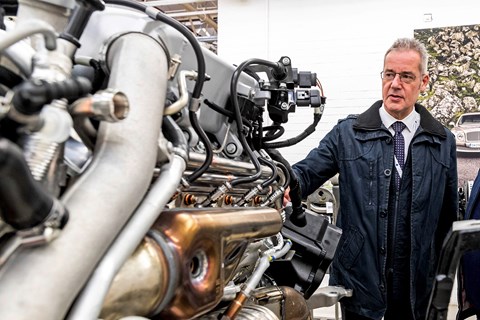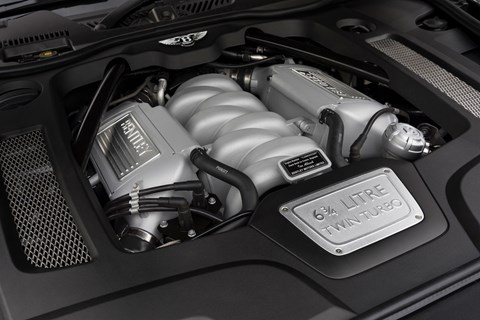► Bentley’s epic L-Series V8 in depth
► The inside of story of a 60-year outdated engine
► From the late ’50s to 2020
Superb motor cars like Bentley’s recently retired Mulsanne are redolent of a bygone age. And just as time ultimately caught up with the Mulsanne – Bentley’s flagship bows out this calendar year, with 30 Mulsanne 6.75 Version by Mulliner cars – so it has caught up with the Mulsanne’s exceptional motor, the pushrod V8 that remained in ongoing generation for more than 60 years. In that time some 36,000 have been built.
Initially designed in the early ’50s, the L-collection V8 was no heavier (thanks to its all-alloy construction) and hardly any even bigger than the 6 it changed (it experienced to suit in the exact same motor bay, that of the ’59 S2) and, at 180bhp, some 50 for every cent extra effective. Fifty percent a century later on, in the Mulsanne Velocity, it would be superior for 530bhp and an astonishing 811lb ft of torque.
Tim Seipel joined Bentley in 2005, in time to oversee a pair of crucial phases of the 6.75’s evolution. Here’s what went down.

Healthy for purpose
‘The 6.75 was deployed in the huge luxurious saloons – the Arnage and the Mulsanne – and it suited them brilliantly,’ claims Seipel. ‘The a lot more contemporary engines just weren’t the similar. There was a BMW motor in the Arnage when VW acquired Bentley, and the extremely very first engineering undertaking issued by Ferdinand Piëch was to have the 6.75 re-put in in the Arnage. The significant ability, throughout just eight cylinders – most rival engines applied 12 – intended you didn’t need to rev it to accessibility its overall performance.’
Faster, more robust
‘The engine created 400-450bhp on the previous Garrett turbos 450-500bhp and extra torque with the MHIs. For 2010, and the Mulsanne, we turned the wick up yet again using classes learned on the Brooklands coupe. That was our initial foray into the realm of 750lb ft, and we strengthened the engine to cope.’
Just add lightness
‘In that 2010 overhaul, a lot of function went into lowering the fat of the base close. It is a triple win you reduce the in general fat of the motor, you enhance efficiency and you decrease gasoline usage. We saved 6kg with a new crankshaft, 130g per piston and 100g for every conrod.’

Slick coatings
‘The pistons and gudgeon pins ended up coated with diamond-like carbon [DLC], while the piston skirts were being coated with graphite. These coatings helped lower friction and gas intake, and they served the sections in dilemma deal with very superior loads.’
Cam phasing
‘Pushrod architecture designed it possible to include cam phasing [variable valve timing] rather expense effectively, and it’s some thing we wished to do for a lot of motives: improved cylinder fill, reduced-speed torque, high-pace power, part-load cleanliness and a clean turbo shipping and delivery. We mounted the cam phaser on the entrance of the block, where the camshaft generate is, and ran an oil feed to it. Adding the technologies to an overhead-valve motor would have been a considerably additional concerned course of action.’
Cylinder shutdown
‘For the deactivation [enabling the engine to shut down some cylinders under low load, for increased efficiency] we desired to place electronic switching models on the tappet blocks, and deliver two oil feeds a person for lubrication and a single to act as a force signal to the tappet, telling it to activate or de-activate. We also had to operate wires inside the crankcase and seal a connector to the crankcases. Truly, it was not a large amount of transform for a extremely modern-day little bit of technologies – that was the ingenious issue about it. And this was the very first motor across the whole VW Group to get cylinder deactivation thereafter we ended up observed as the authorities. The scaled-down Bentley V8 is a Porsche motor, of training course, but it was Bentley engineers who taught Porsche about cylinder deactivation.’

Selling swirl
‘The engine was updated all over again in 2017, with changes to the form of the ports and the combustion chamber. That perform was about cleaner combustion, to fulfill Euro 6 regulations, and a extra secure idle. The variances were being rather depth – they’d be hard to location to the untrained eye – but they built for a significantly faster burn. Beforehand we experienced wealthy pockets inside the chamber, and we necessary a additional homogeneous combine to cleanse the motor up. The alterations gave far more swirl, and that turbulence gave us a improved fuel/air blend. The engine remained two valves per cylinder of training course – two extremely significant valves for each cylinder…’






More Stories
Do’s and Don’ts of Car Rental
Jeep’s Target Market Covers Everyone
How to Create Consistent Hitting Mechanics